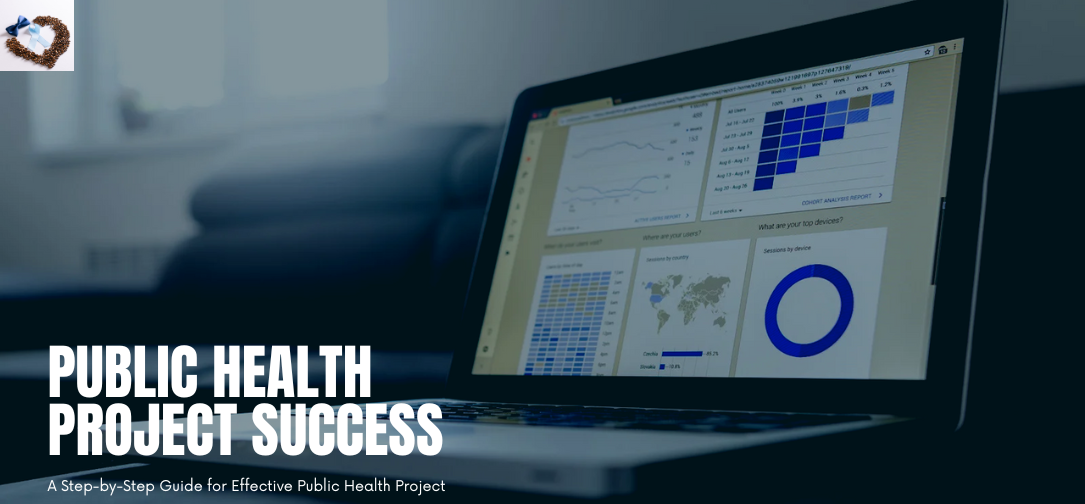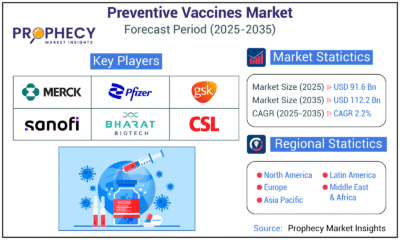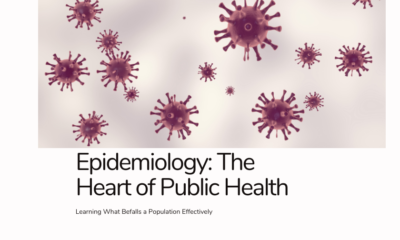Public Health
Step-by-Step Guide for Writing a Successful Public Health Project

Public health projects play a critical role in promoting health and preventing disease within communities. Whether you’re a student, researcher, or public health professional, crafting a successful public health project requires careful planning, thorough research, and effective communication. This comprehensive guide will take you through the step-by-step process of writing a successful public health project, from initial planning to final presentation.
1) Understanding the Purpose of a Public Health Project
Before diving into the specifics of writing a public health project, it’s essential to understand its purpose. Public health projects aim to address specific health issues within a community or population. These projects can range from research studies to health promotion programs and policy evaluations. The primary goals of a public health project are to:
Identify a Public Health Problem: Clearly define a health issue that affects a particular population.
Assess Needs and Resources: Evaluate the needs of the community and the resources available to address the issue.
Develop and Implement Interventions: Design and execute interventions or programs to tackle the health problem.
Evaluate Outcomes: Measure the effectiveness of the interventions and assess their impact on the target population.
Disseminate Findings: Share the results and recommendations with stakeholders, policymakers, and the broader public health community.
2) Initial Planning and Topic Selection
The foundation of a successful public health project lies in careful initial planning and thoughtful topic selection. This phase sets the direction for the entire project.
Define the Scope of the Project
Start by defining the scope of your project. Consider the following questions:
What health issue do you want to address? Choose a relevant, timely, and significant topic to public health.
Who is the target population? Identify the specific population or community affected by the health issue.
What is the geographical focus? Determine whether your project will focus on a local, regional, national, or global scale.
What are the project’s objectives? Clearly outline the goals you aim to achieve through your project.
Conduct a Literature Review
Before finalizing your topic, conduct a thorough literature review to understand the existing research and identify gaps that your project can fill. This involves:
Reviewing Previous Studies: Analyze studies related to your topic to understand what has been done and where there is room for further investigation.
Identifying Gaps: Look for areas where research is lacking or where previous interventions have been ineffective.
Refining Your Topic: Based on your findings, refine your topic to ensure it addresses a specific need in the field of public health.
Formulate Research Questions or Objectives
Once you have a clear understanding of the scope and existing literature, formulate specific research questions or project objectives. These should be:
Specific: Clearly define what you aim to investigate or achieve.
Measurable: Ensure that the outcomes can be quantified or assessed.
Achievable: Set realistic goals that can be accomplished within the constraints of your project.
Relevant: Focus on a topic that has significance to public health. Time-bound: Establish a timeline for completing the project.
3) Designing the Project
With your topic and objectives in place, the next step is to design the project. This involves deciding on the methodology, tools, and resources you will use to achieve your goals.
Choose an Appropriate Study Design
The study design is a critical component of your project, as it determines how you will collect and analyze data. Common study designs in public health include:
Cross-Sectional Studies: These studies assess the prevalence of a health issue in a population at a specific point in time.
Cohort Studies: These involve following a group of individuals over time to assess the impact of various factors on health outcomes.
Case-Control Studies: These studies compare individuals with a particular condition (cases) to those without it (controls) to identify risk factors.
Randomized Controlled Trials (RCTs): These are experimental studies where participants are randomly assigned to intervention or control groups to assess the effectiveness of an intervention.
Qualitative Studies: These studies use methods like interviews and focus groups to explore attitudes, beliefs, and experiences related to health issues.
The choice of study design should align with your research questions and objectives.
Develop a Detailed Methodology
Once you have chosen a study design, develop a detailed methodology that outlines how you will conduct the project. This should include:
Population and Sample: Define the target population and sampling method. Specify inclusion and exclusion criteria for participants.
Data Collection Methods: Describe the tools and techniques you will use to collect data, such as surveys, interviews, or biological measurements.
Data Analysis Plan: Outline the statistical or qualitative methods you will use to analyze the data. Specify software or tools that will be used for analysis.
Ethical Considerations: Address ethical issues, including informed consent, confidentiality, and the potential risks to participants. Obtain approval from an institutional review board (IRB) if required.
Timeline and Milestones: Create a timeline that includes key milestones for data collection, analysis, and reporting.
Identify Resources and Budget
Successful project implementation requires careful planning of resources and budget. Consider the following:
Personnel: Identify the team members involved in the project and their roles.
Materials and Equipment: List any materials, equipment, or software needed for data collection and analysis.
Funding: Determine the budget required for the project and identify potential funding sources. Prepare a budget plan that includes all anticipated expenses.
4) Implementation
Once the project is designed and approved, the next step is implementation. This involves putting your plan into action, collecting data, and managing the project effectively.
Data Collection
Data collection is a crucial phase where accuracy and consistency are key. Follow these steps to ensure successful data collection:
Training: Train your research team on data collection protocols to ensure consistency and reduce errors.
Pilot Testing: Conduct a pilot test of your data collection methods to identify any issues and make necessary adjustments.
Data Management: Establish a system for managing and storing data securely. Ensure that data is backed up regularly to prevent loss.
Monitoring and Quality Control
Throughout the implementation phase, it’s essential to monitor progress and maintain quality control:
Regular Monitoring: Monitor data collection regularly to ensure that it is proceeding according to plan. Address any issues or delays promptly.
Quality Control Measures: Implement quality control measures, such as double-checking data entries and conducting periodic audits.
Adjustments: Be prepared to make adjustments to the methodology or timeline if unexpected challenges arise.
Data Analysis
After data collection is complete, the next step is data analysis. This involves:
Cleaning the Data: Review and clean the data to remove any errors or inconsistencies.
Descriptive Analysis: Begin with descriptive statistics to summarize the data and understand basic patterns.
Inferential Analysis: Use inferential statistics to test hypotheses and draw conclusions based on the data.
Qualitative Analysis: For qualitative data, conduct thematic analysis or other appropriate methods to identify key themes and patterns.
5) Interpretation and Discussion of Results
Once the data analysis is complete, interpret the results and discuss their implications. This phase is critical for making sense of the data and understanding its impact on public health.
Interpretation of Findings
Interpreting the results involves making sense of the data in the context of your research questions and objectives:
Contextualize the Results: Compare your findings with previous studies and consider how they fit within the broader public health context.
Assess the Strength of Evidence: Evaluate the strength of the evidence provided by your data. Consider factors such as sample size, effect size, and statistical significance.
Identify Limitations: Acknowledge any limitations of your study, such as potential biases, confounding factors, or generalizability issues.
Discussion
The discussion section should explore the implications of your findings and how they contribute to public health knowledge:
Public Health Implications: Discuss how your findings can inform public health policy, practice, or future research.
Recommendations: Based on your findings, make recommendations for public health interventions, programs, or policies.
Future Research: Suggest areas for future research to address unanswered questions or explore related topics.
Conclusion
Conclude your project by summarizing the key findings and their significance:
Restate Key Findings: Briefly restate the main findings of your project.
Highlight Contributions: Emphasize the contributions of your project to the field of public health.
Final Thoughts: Offer any final reflections on the project and its potential impact.
6) Writing the Project Report
The project report is the formal documentation of your work. It should be well-organized, clear, and comprehensive.
Structure of the Report
A typical public health project report includes the following sections:
Title Page: Include the project title, your name, institution, and date of completion.
Abstract: Provide a brief summary of the project, including the background, objectives, methods, key findings, and conclusions.
Introduction: Introduce the topic, provide background information, and state the research questions or objectives.
Literature Review: Summarize the relevant literature and highlight the gaps that your project addresses.
Methodology: Describe the study design, population, data collection methods, and data analysis plan.
Results: Present the findings of your analysis, including tables, figures, and charts as needed.
Discussion: Interpret the results, discuss their implications, and make recommendations.
Conclusion: Summarize the key points and contributions of the project.
References: List all the sources cited in your report following the appropriate citation style (e.g., APA, MLA, Chicago).
Appendices: Include any additional materials, such as survey instruments, consent forms, or detailed data tables.
Writing Tips
When writing your report, consider the following tips to ensure clarity and readability:
Use Clear and Concise Language: Avoid jargon and technical language that may be difficult for readers to understand. Write clearly and concisely.
Follow a Logical Flow: Ensure that the report follows a logical flow from the introduction to the conclusion. Each section should build on the previous one.
Use Visuals: Incorporate tables, charts, and figures to illustrate your findings. Visuals can help clarify complex data and make your report more engaging.
Proofread and Edit: Carefully proofread and edit your report to eliminate errors and improve clarity. Consider having a peer or mentor review your work before submission.
Adhering to Guidelines
If you are writing the project for an academic course, funding agency, or publication, make sure to adhere to any specific guidelines provided. This may include formatting requirements, length limitations, and submission procedures.
7) Presentation and Dissemination
After completing your report, the final step is to present and disseminate your findings to the appropriate audience.
Preparing a Presentation
If you are required to present your project, prepare a clear and engaging presentation:
Create a Visual Presentation: Use presentation software like PowerPoint or Google Slides to create slides that highlight the key points of your project.
Practice Your Presentation: Rehearse your presentation to ensure that you can deliver it confidently and within the allotted time.
Engage the Audience: Use visuals, examples, and anecdotes to make your presentation engaging. Be prepared to answer questions from the audience.
Dissemination of Findings
Disseminating your findings is crucial for maximizing the impact of your project:
Publish in Academic Journals: Consider submitting your report to a peer-reviewed public health journal for publication.
Present at Conferences: Present your findings at public health conferences, workshops, or seminars to share your work with the public health community.
Share with Stakeholders: Share your findings with relevant stakeholders, such as public health officials, policymakers, and community organizations, to inform decision-making and policy development.
Use Social Media: Utilize social media platforms and public health networks to disseminate your findings more broadly.
8) Reflecting on the Project
After the project is complete, take time to reflect on the process and the outcomes:
Evaluate the Project: Reflect on what worked well and what could have been improved. Consider the challenges you faced and how you overcame them.
Consider Future Directions: Think about how the project could be expanded or built upon in future research or public health initiatives.
Document Lessons Learned: Document the lessons learned during the project to inform your future work and share insights with others.
Conclusion
Writing a successful public health project is a complex but rewarding process that involves careful planning, rigorous research, and effective communication. By following the steps outlined in this guide, you can develop a well-structured, impactful project that addresses critical public health issues and contributes to the betterment of communities and populations. Whether you are a student, researcher, or public health professional, this step-by-step approach will help you navigate the challenges of public health project writing and achieve success in your endeavors.
-

 Press Release4 days ago
Press Release4 days agoClinical Trials Market Set for Robust Growth, Driven by Drug Development Surge and Digital Innovation
-

 Press Release5 days ago
Press Release5 days agoFill-Finish Pharmaceutical Contract Manufacturing Market Expected to Flourish Amid Biopharmaceutical Boom and Global Outsourcing Trend by 2035
-

 Business6 days ago
Business6 days agoHow Managed IT Solutions Help Small Teams Compete at Enterprise Scale
-

 Press Release5 days ago
Press Release5 days agoGreen Bio Chemicals Market Poised for Sustainable Growth amidst Global Shift to Eco-Friendly Alternatives by 2035
-

 Press Release5 days ago
Press Release5 days agoIndustrial Boiler Market Expected to Surpass USD 24.4 Billion by 2035 Amid Growing Demand for Energy Efficiency and Industrialization
-

 Press Release5 days ago
Press Release5 days agoPreventive Vaccines Market to Witness Strong Growth by 2035
-

 Press Release5 days ago
Press Release5 days agoPet Food Nutraceutical Market Set for Robust Expansion Amid Rising Demand for Pet Wellness by 2035
-

 Press Release4 days ago
Press Release4 days agoWaterproof Structural Adhesives Market: A Comprehensive Study Towards USD 10.3 Billion in 2035






















